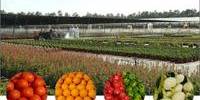Rice is the primary food source for millions of people throughout Asia. Rice, which is thought to have been domesticated as early as 6000 BCE, is a major source of calories all across the world. It is the world’s most important food crop, feeding millions of people every day. Domesticated rice comes in two varieties: Oryza sativa (Asian rice) and Oryza glaberrima (African rice), both of which have separate domestication histories.
Researchers compared domesticated rice to its wild counterparts in a new study to better understand the differences in photosynthetic capacity. The findings could aid in increasing rice output in the future.
Rice is the most important food crop in terms of human nutrition and caloric intake, delivering more than one-fifth of the calories consumed globally by humans, due to large amounts of sugarcane and maize crops being used for uses other than human consumption. Rice comes in a variety of shapes and sizes, and culinary preferences vary by region.
Oryza rufipogon and Oryza nivara are weed-like wild rice species that grow taller than farmed rice Oryza sativa. While these characteristics are advantageous in the wild because they may shade out competitors, they are detrimental in an agricultural context and can result in poorer yields.
Many rice types have been selected for their short stature and erect leaves with steep angles as a result of domestication and breeding, allowing for improved light distribution across the canopy. Despite these gains, the distribution remains unequal and is influenced by wind and cloud cover.
“Previously, researchers primarily focused on photosynthesis in constant high light. When you’re in a field, however, plants are always in dynamic conditions and leaves are rarely in constant light due to clouds, overlying leaves moving in the wind, and intermittent shading caused by the movement of the sun,” said Liana Acevedo-Siaca, first author of this paper, who was a graduate student in the Long lab when this work was conducted.
“Additionally, other researchers have only looked at domesticated rice in the context of photosynthetic induction. We wanted to compare them to their progenitors to see what has changed over time.”
We found that there were differences in photosynthesis in fluctuating light that weren’t reflected under the constant high-light conditions used in most previous studies. Even though the size of the study was small, we hope that our results are indicative of larger trends.
Acevedo-Siaca
When the light environment shifts from shade to sun and again, the leaves undergo multiple photosynthetic modifications. The leaves begin to take up more carbon dioxide for photosynthesis during the transition from low to high light, a process known as photosynthetic induction.
This process repeats numerous times a day in a field, and because photosynthesis does not react immediately, photosynthetic effectiveness is reduced over the course of a day and a growing season.
Conversely, when switching from high to low light, the stomata, or minute openings in the leaves that allow carbon dioxide, water vapor, and oxygen to pass through, may close excessively slowly, resulting in wasteful water loss.
Acevedo-Siaca cultivated wild rice and O. sativa in a screenhouse, a greenhouse with open walls, at the International Rice Research Institute in the Philippines, to assess carbon dioxide uptake and stomatal water loss.
She used an infrared gas analyzer to regulate the light levels and quantify how much CO2 was taken up by the leaf, simulating some of the light changes occurring in natural crop canopies.
“We saw that although the photosynthetic induction was a lot faster in the wild rice species, the domesticated species was a lot faster at closing its stomata, leading to less water loss,” Acevedo-Siaca said.
Rice, on the other hand, can be cultivated almost anywhere, including on a steep slope or mountain with the use of water-controlling terrace systems. Because O. rufipogon and O. nivara grow in a wider range of environments, there may be more competition for light and hence a greater incentive to respond swiftly to environmental changes.
“We found that there were differences in photosynthesis in fluctuating light that weren’t reflected under the constant high-light conditions used in most previous studies. Even though the size of the study was small, we hope that our results are indicative of larger trends,” Acevedo-Siaca said.
Characterizing photosynthetic induction at various levels of the canopy may aid future research since leaves that have become accustomed to low light will behave differently than leaves that have become accustomed to high light.
“We were interested to know whether the domestication of rice inadvertently improved its photosynthetic efficiency. Alternatively, if the breeding process was detrimental to particular characteristics, maybe we can go back to wild rice and introduce those traits into domesticated rice,” said Stephen Long (BSD/CABBI/GEGC), the Ikenberry Endowed University Chair of Crop Sciences and Plant Biology. “We are also undertaking similar work with other crops such as cowpea and soybean.”
The C4 Rice Center at the International Rice Research Institute in Los Baos, Philippines, collaborated on this project. The Bill and Melinda Gates Foundation, the Foundation for Food and Agriculture Research, and the UK Foreign, Commonwealth and Development Office also contributed to the project.
















